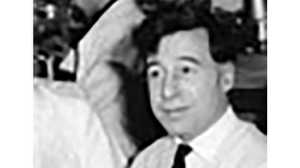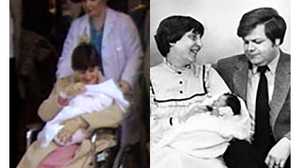First Human Eggs Fertilized in a Laboratory
In 1944 a lab technician named Miriam Menkin became the first person to witness the creation of life outside the human body. She had performed the first laboratory fertilization of a human egg. But Menkin would soon be forced to leave the lab she loved, and test tube babies would remain decades away.
Bypassing Blocked Fallopian Tubes
In 1938 John Rock was one of Boston’s most prominent doctors, specializing in obstetrics and gynecology. A graduate of Harvard Medical School, devout Catholic, and father of five, Rock believed that children were an essential part of any family and had a long-standing interest in trying to help women have them. He started an infertility clinic at the Free Hospital for Women in 1926. One of Rock’s frustrations came in trying to help women who were unable to conceive because of damaged or blocked fallopian tubes. Rock’s success rate for tubal reconstructions was just seven percent, and no one else was doing better. When in the 1930s, he heard about the successful fertilization experiments that Harvard scientist Gregory Pincus had performed in rabbits, Rock saw an opportunity to solve this problem. If in vitro fertilization (IVF) could be performed in humans, the fallopian tubes could be bypassed. In 1938 he hired Miriam Menkin, who had worked as a lab technician for Pincus, and the two of them set out to see if human IVF was possible.
Lab Experiments
Miriam Menkin had once dreamed of being a doctor herself, but she gave that up to work as a technician and help put her husband through medical school. Skilled and intelligent, she was the ideal candidate for the work. She found microscopic eggs within ovaries that Rock had surgically removed from hysterectomy patients, put the ova in solution, cultured them, added sperm to the eggs in a petri dish, and attempted to achieve fertilization. Menkin worked on the process for nearly six years; she tried to fertilize 138 of the 800 ova gathered during that period, but nothing worked. Menkin fell into a frustrating routine: on Tuesday she would collect eggs from the ovaries, on Wednesday she would add sperm, on Thursday she would pray, and on Friday she would learn the eggs had failed to fertilize.
Success
Then, in February 1944, Rock and Menkin’s prayers were answered. She let the sperm in the petri dish stay in contact with the egg for much longer than usual. To her astonishment, this time the egg was successfully fertilized and Menkin witnessed the first conception ever to occur outside the human body. She repeated the experiment successfully three times between February and April, and photographed the fertilized eggs. When Rock and Menkin’s findings were published, they caused an instant sensation.
Unfulfilled Promise
Rock and Menkin only let their fertilized eggs develop for a couple of days, and they made no attempt to transplant the eggs back into a woman’s body. Still, their discoveries held great future promise — a promise that in their case would go sadly unrealized. Menkin’s husband lost his job, and she was forced to move with him to North Carolina. In a 1949 missive, Rock described two eggs lost and wrote, “We need you badly.” Besieged by letters from infertile women who had heard of his experiments, Rock wrote back but was unable to meet their expectations, which had been falsely raised by sensationalist magazine articles. Rock’s research interests expanded to include new synthetic hormones and male infertility and he left theIVF field to other doctors like Landrum Shettles. John Rock, did not, however, fade from public view. In the 1950s he teamed up with Pincus and ran the first human tests of the birth control pill. Rock would battle Catholic Church resistance to the Pill for the rest of his days, dying in 1984.







